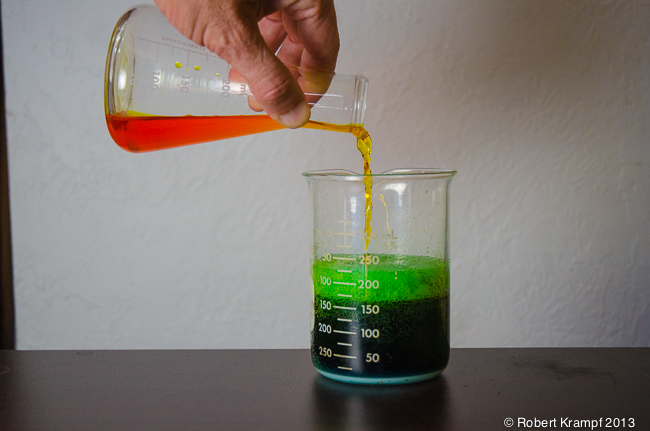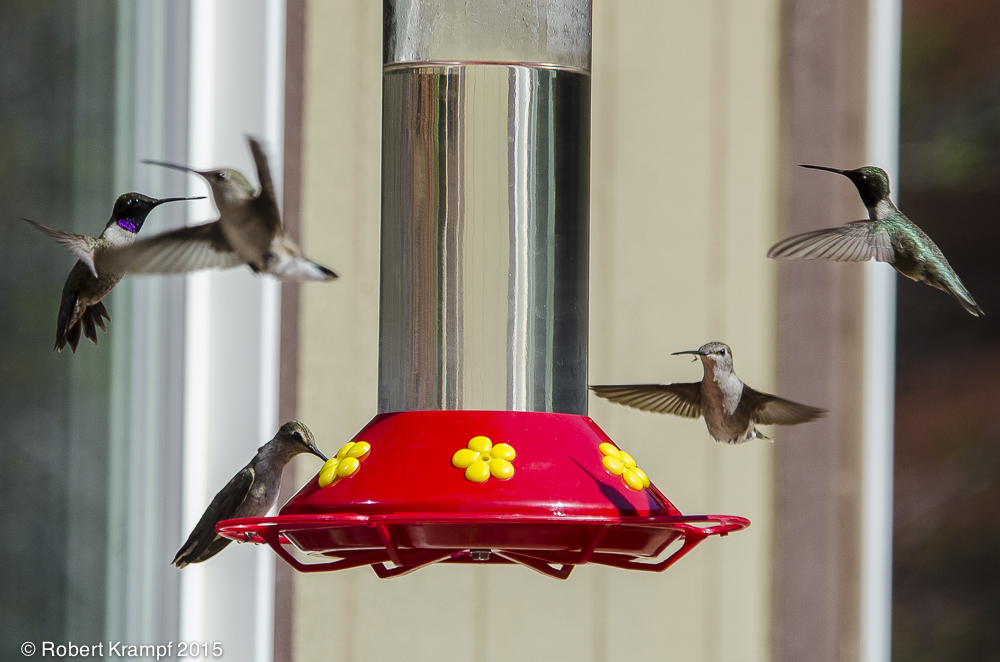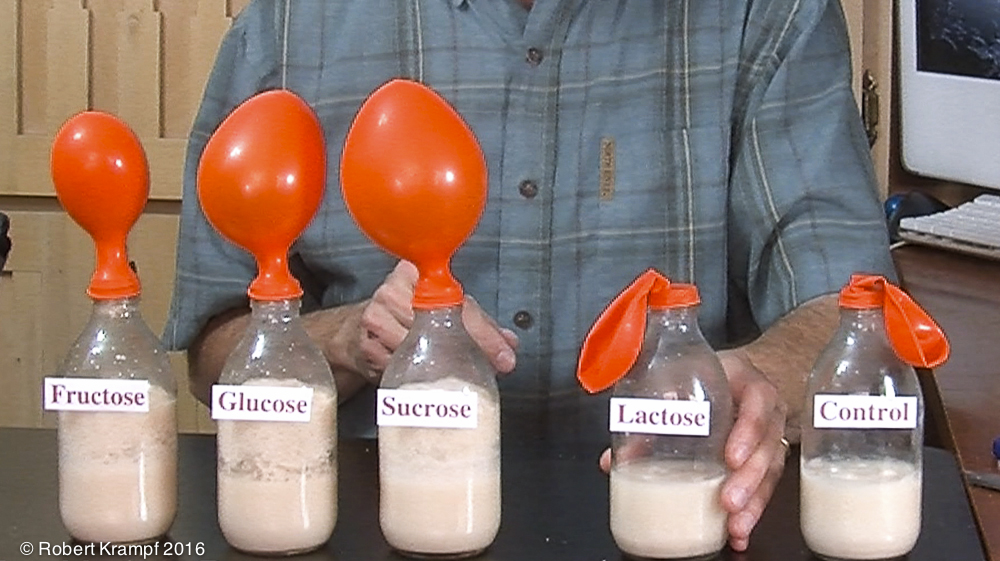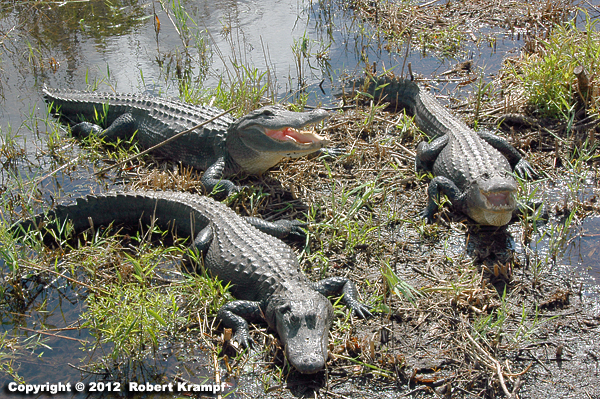Here are some science questions to help you test your knowledge of the Next Generation Sunshine State Standards.
The questions are chosen randomly, so this quest will be different each time you reload the page.
Back to the Grade 5 standards.

When a scientist makes a new discovery, other scientists usually do exactly the same experiment. Why?
-
They want to get part of the credit.
No. While replicating an experiment is very important, the scientists who do it usually don't get much credit for their work unless they discover an error in the original experiment. -
Repetition is part of the scientific process.
No. Repetition is when scientists repeat their own experiment several times, not when other scientists do the same experiment. -
They think they can make changes to improve the experiment.
No. By doing exactly the same experiment, they are not changing anything. Instead, they are replicating the experiment as closely as possible. -
Replication is part of the scientific process.
Yes. By replicating the experiment, other scientists can help verify that the results are accurate. There is always a possibility that there was some unnoticed influence on the original experiment, and replication can help spot that.
Click to see which state standards this question tests, and which of my videos, experiments, and other resources support that topic.
Florida
SC.2.N.1.4 Explain how particular scientific investigations should yield similar conclusions when repeated.
| What is Science? | video, ClosedCaptions |
| Review Scientific Process-10 | practice |
| Review Scientific Process-6 | practice |
| Review Scientific Process-5 | practice |
| Review Scientific Process-7 | practice |
SC.5.N.2.2 Recognize and explain that when scientific investigations are carried out, the evidence produced by those investigations should be replicable by others.
>>> Teacher Page: Nature of Science and Dissolving
| What is Science? | video, ClosedCaptions |
| What is Science?: Repeat and Replicate | video |
| Review Scientific Process-10 | practice |
| Review Scientific Process-6 | practice |
| Review Scientific Process-5 | practice |
SC.6.N.1.2 Explain why scientific investigations should be replicable.
| What is Science? | video, ClosedCaptions |
| What is Science?: Repeat and Replicate | video |
| Review Scientific Process-6 | practice |
| Review Scientific Process-5 | practice |
SC.7.N.1.2 Differentiate replication (by others) from repetition (multiple trials).
| What is Science? | video, ClosedCaptions |
| What is Science?: Repeat and Replicate | video |
| Review Scientific Process-6 | practice |
| Review Scientific Process-5 | practice |
SC.8.N.1.2 Design and conduct a study using repeated trials and replication.
| What is Science?: Repeat and Replicate | video |
| Review Scientific Process-6 | practice |
| Review Scientific Process-5 | practice |
| Review Scientific Process-7 | practice |
| Review Scientific Process-10 | practice |
Utah
NGSS

We enjoy the hummingbirds that visit our feeders. I am trying to find the mixture of sugar and water that they like the best.
Each day, I put out four feeders with different amounts of water and sugar. At the end of each day, I measure to see how much of each the hummingbirds drank. Which of the following is NOT an important part of this experiment?
-
One of the feeders should only contain water, with no sugar.
No. This IS an important part of the experiment. The feeder without any sugar is the control. If the hummingbirds drink just as much pure water, it would indicate that the sugar is not important. -
The feeders should be placed randomly every day.
No. This IS an important part of the experiment. If you always put the same mixture in the same location, the results may be because the birds like that location instead of because they like the amount of sugar. -
I should repeat this experiment every day for several weeks.
No. This IS an important part of the experiment. The more times you repeat the same test, the more likely you are to get accurate results. -
The different mixtures should be colored different colors with nontoxic food coloring.
Yes. This is NOT an important part of the experiment. It would add a second variable to the experiment, which is a bad thing. You want everything to be the same for each sample, with the only difference being the amount of sugar. If you used different colors and different amounts of sugar, you would not know whether the results were due to the color or the sugar.
Click to see which state standards this question tests, and which of my videos, experiments, and other resources support that topic.
Florida
SC.5.N.1.4 Identify a control group and explain its importance in an experiment.
| Bacteria and Antibiotics | video, ClosedCaptions |
| Testing a Leaf for Starch | video, ClosedCaptions |
| Review Scientific Process-2 | practice |
| Review Scientific Process-9 | practice |
| Review Scientific Process-11 | practice |
| Review Scientific Process-1 | practice |
SC.7.N.1.4 Identify test variables (independent variables) and outcome variables (dependent variables) in an experiment.
| Floating Cups | video, checked |
| Testing for Tannic Acid | video |
| Review Scientific Process-9 | practice |
| Review Scientific Process-11 | practice |
| Review Scientific Process-1 | practice |
| Review Scientific Process-2 | practice |
Utah
NGSS
3-5-ETS1-3 Plan and carry out fair tests in which variables are controlled and failure points are considered to identify aspects of a model or prototype that can be improved.
| What is Science? | video, ClosedCaptions |
| Review Scientific Process-9 | practice |
| Review Scientific Process-10 | practice |
| Review Scientific Process-11 | practice |
| Review Scientific Process-1 | practice |
| Review Scientific Process-2 | practice |
| Review Scientific Process-7 | practice |

In the Yeast and Sugar video, I added different kinds of sugar to bottles with yeast and warm water. One of the bottles was a control. What should have been in that bottle?
-
Just water
No. With just water, you are removing two variables, the yeast and the sugar. You only want to remove the independent variable.
-
Water and yeast
Yes! A control should be exactly like the others, but without the independent variable (the variable you are changing in the experiment.) In this case, the variable you are changing is the kind of sugar, so the control should have everything except for the sugar. -
Water and sugar
No. The yeast is not the independent variable, so leaving it out would not be correct. -
Water and salt
No. Adding salt would be adding a new variable, which is not correct.
Click to see which state standards this question tests, and which of my videos, experiments, and other resources support that topic.
Florida
SC.5.N.1.4 Identify a control group and explain its importance in an experiment.
| Bacteria and Antibiotics | video, ClosedCaptions |
| Testing a Leaf for Starch | video, ClosedCaptions |
| Review Scientific Process-2 | practice |
| Review Scientific Process-9 | practice |
| Review Scientific Process-11 | practice |
| Review Scientific Process-1 | practice |
SC.7.N.1.4 Identify test variables (independent variables) and outcome variables (dependent variables) in an experiment.
| Floating Cups | video, checked |
| Testing for Tannic Acid | video |
| Review Scientific Process-9 | practice |
| Review Scientific Process-11 | practice |
| Review Scientific Process-1 | practice |
| Review Scientific Process-2 | practice |
Utah
NGSS
3-5-ETS1-3 Plan and carry out fair tests in which variables are controlled and failure points are considered to identify aspects of a model or prototype that can be improved.
| What is Science? | video, ClosedCaptions |
| Review Scientific Process-9 | practice |
| Review Scientific Process-10 | practice |
| Review Scientific Process-11 | practice |
| Review Scientific Process-1 | practice |
| Review Scientific Process-2 | practice |
| Review Scientific Process-7 | practice |

I wanted to test a new fertilizer, to find the best concentration for my garden. I divided my garden into four sections and put a different amount of fertilizer in each section.
My test results showed that using 10 grams of fertilizer per gallon made the plants grow faster and bigger. To follow proper scientific guidelines, what should I do next?
-
Apply 10 grams of fertilizer per gallon to all the plants in my garden.
No. While that might make my garden grow well, it would not provide more evidence that this was the best mixture of fertilizer -
Do the same experiment over again.
Yes! Repetition is an important part of the scientific process. If my hypothesis is correct, I should get the same results every time I repeat the experiment. -
Do the same experiment, but use a different fertilizer.
No. Using a different fertilizer would be testing a different variable. I wanted to find the best concentration of the original fertilizer, so testing a different fertilizer would not help with that. -
Publish my results, so that other scientists could replicate my experiment.
No. Replication is an important step, but I should repeat my experiment several times to be sure that I get consistent results before I ask other scientists to try replicating it.
Click to see which state standards this question tests, and which of my videos, experiments, and other resources support that topic.
Florida
SC.2.N.1.4 Explain how particular scientific investigations should yield similar conclusions when repeated.
| What is Science? | video, ClosedCaptions |
| Review Scientific Process-10 | practice |
| Review Scientific Process-6 | practice |
| Review Scientific Process-5 | practice |
| Review Scientific Process-7 | practice |
SC.5.N.1.3: Recognize and explain the need for repeated experimental trials.
>>> Teacher Page: Nature of Science and Dissolving
| What is Science? | video, ClosedCaptions |
| What is Science?: Repeat and Replicate | video |
| Review Scientific Process-7 | practice |
| Review Scientific Process-10 | practice |
SC.8.N.1.2 Design and conduct a study using repeated trials and replication.
| What is Science?: Repeat and Replicate | video |
| Review Scientific Process-6 | practice |
| Review Scientific Process-5 | practice |
| Review Scientific Process-7 | practice |
| Review Scientific Process-10 | practice |
Utah
NGSS
3-5-ETS1-3 Plan and carry out fair tests in which variables are controlled and failure points are considered to identify aspects of a model or prototype that can be improved.
| What is Science? | video, ClosedCaptions |
| Review Scientific Process-9 | practice |
| Review Scientific Process-10 | practice |
| Review Scientific Process-11 | practice |
| Review Scientific Process-1 | practice |
| Review Scientific Process-2 | practice |
| Review Scientific Process-7 | practice |

Which of the following statements is scientifically testable?
-
These alligators are scary.
No. Being scary is not a physical property. Instead, it is an opinion. Some people might think they are scary, while other people might think they are not. -
These alligators have sharp teeth.
Yes! Careful observation would show that all three of these alligators have very sharp teeth. Anyone who put their hand into the mouth of these alligators would find out quickly that sharp teeth are a measurable, physical property that is scientifically testable.Remember that scientifically testable properties are going to be the same, no matter who tests them. For example, these alligators each have four legs, scaly skin, and lungs for breathing air. They are carnivorous, which means that they eat other animals. They are reptiles, and they lay eggs.
All of that information is based on physical evidence that can be checked and verified. You could count their legs, examine their skin, etc. These things are scientifically testable.
On the other hand, opinions are a property of the observer, not the object. I may think alligators are interesting. Someone else may thing they are scary, or ugly, or boring. You could test different people, to see if they think alligators are scary, but you can't test the alligator to see if it is scary. Opinions are not scientific evidence about the object.
-
These alligators have ugly eyes.
No. Again, this is an opinion, not a measurable, physical property. I happen to think that alligators have pretty eyes. -
These alligators are lazy.
No. Lazy is not a measurable property. I might call them lazy, but you might think that they are just waiting for something tasty to walk by. Lazy is an opinion, and is not scientifically testable.
Click to see which state standards this question tests, and which of my videos, experiments, and other resources support that topic.
Florida
SC.5.N.2.1 Recognize and explain that science is grounded in empirical observations that are testable; explanation must always be linked with evidence.
| My Position on Science and Religion | video |
| What is Science?: Objective | video |
| Mobius Strip | video |
| Is Your Project Scientifically Testable? | text page |
| Is Your Project Scientifically Testable? Part 2 | text page |
| Review Scientific Process-3 | practice |
| Review Scientific Process-4 | practice |
| Review Scientific Process-8 | practice |
SC.8.N.2.1 Distinguish between scientific and pseudoscientific ideas.
| What is Science? | video, ClosedCaptions |
| Feeding Bread to Birds | text page |
| Fact checking GMOs | text page |
| I Saw It on the Internet, part four | text page |
| I Saw It on the Internet, part three | text page |
| I Saw It on the Internet, part two | text page |
| I Saw It on the Internet, part one | text page |
| Review Scientific Process-3 | practice |
| Review Scientific Process-4 | practice |
| Review Scientific Process-8 | practice |
